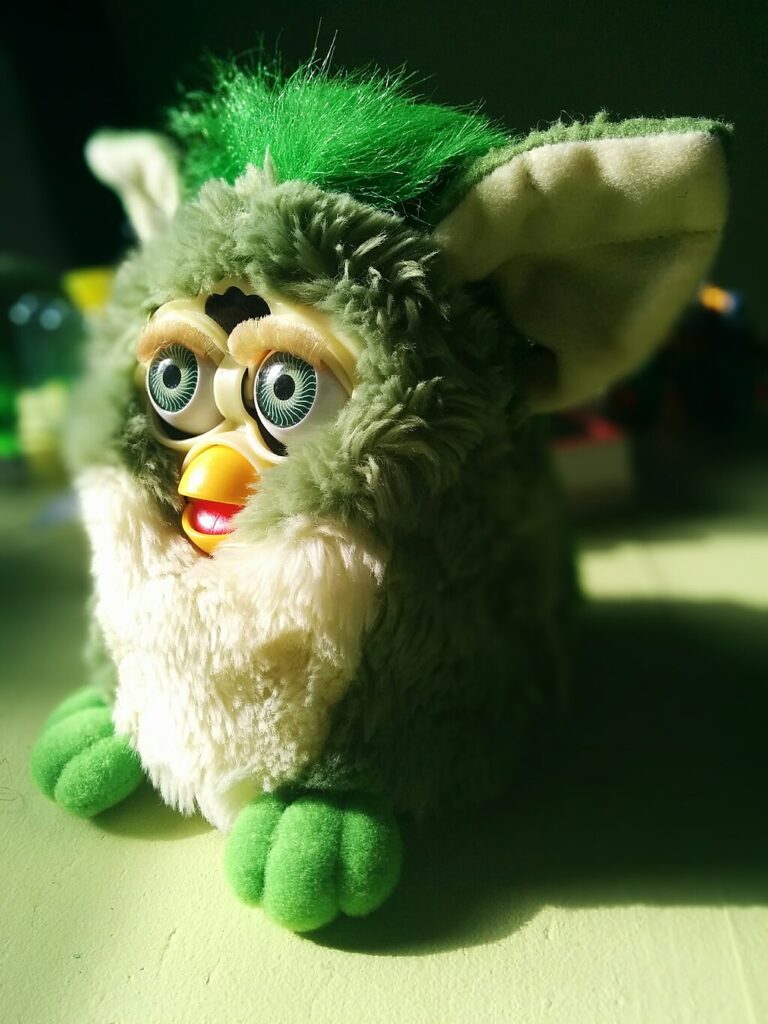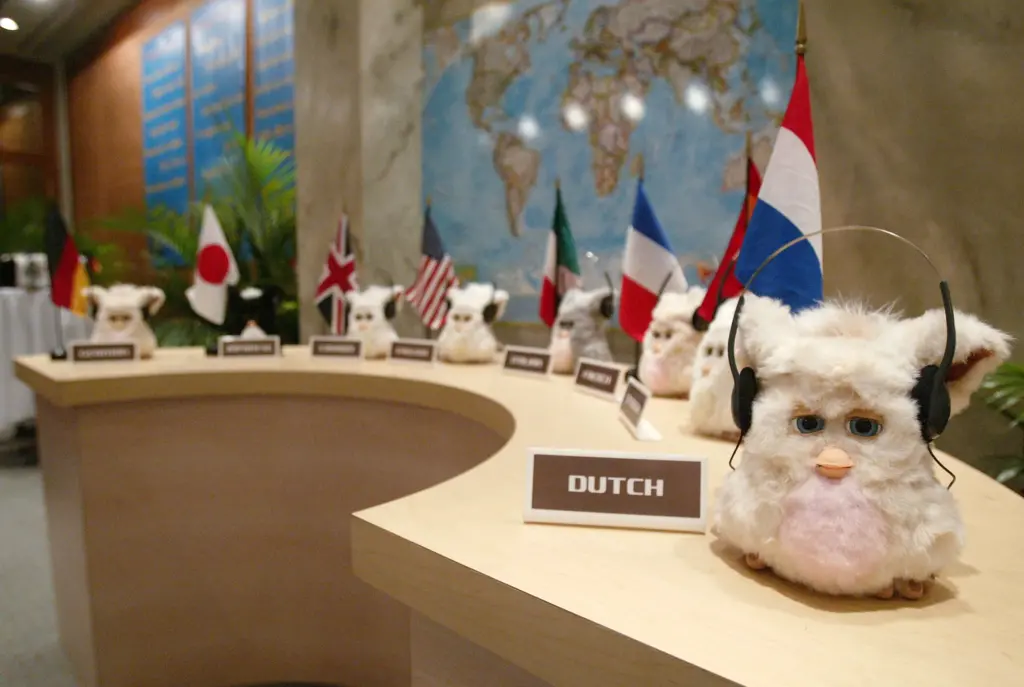
Do you remember 1998? That was the year Google was founded, France won the World Cup, and Microsoft was the largest company in the world. And a furry little creature—half owl, half hamster—was the “it” gift for the holiday season. Marketed in a high-profile advertising campaign on television and mass media, Furby was a $35 digital toy that captured the imaginations of millions around the world and continues to have an active community of fans today.
Furby was a robotic “friend” that could respond to touch, light, and sound. An electric motor and a system of cams and gears closed the Furby's eyes and mouth, raised its ears, and lifted it off the ground. Equipped with these sensors and motors, Furbys could blink, wiggle their ears, and even dance to music. They came in several different outfits and dozens of colors, but they all spoke “Furbish,” an imaginary language that slowly morphed into English as the creature interacted more with its owner.

Kids going wild for Furbys at New York’s FAO Schwartz store, 1998. Credit: UNITED STATES - OCTOBER 02: Students from PS 59 meet Furby, a new interactive toy, at FAO Schwarz. (Photo by Susan Watts/NY Daily News Archive via Getty Images)
Catapulting demand for the toys during the initial 1998 holiday season drove the resale price to well over US $100 and sometimes several times that. As supplies dwindled, arguments and fistfights broke out between rival parents at Toys R’ Us stores. When supplies ran out, consumers turned to the internet, where Furbys could be purchased for many times their retail price.
Furby also caught the attention of American intelligence agencies and the Federal Aviation Administration. The FAA was concerned that the little creatures might interfere with takeoffs and landings and cause safety issues. It even issued an alert that, “Furbys should not be on when the plane is below 10,000 feet.” Because of the way Furbys reacted to light, touch and sound, and fearing that Furbys might record their surroundings (they don’t), the US National Security Agency banned the toy from its headquarters in 1999, as did the US Naval Shipyard in Portsmouth, VA.

Original Furby (1998) https://en.wikipedia.org/wiki/Furby#/media/File:Furby_vert_(Tiger).jpg
But no one else seemed to be worried: During the first three years of production, over 40 million Furbys were sold. A global phenomenon, people from Birmingham to Berlin to Bombay clamored for a fuzzy little creature of their own. The hysteria continued for several years, in part because Furbys were so customizable, making it one of the hottest toys of the late '90s and early 2000s.

Unveiling of the new Furby toy at the UN Plaza on Aug. 2, 2005, in New York City. https://www.nydailynews.com/2023/06/27/furby-then-and-now/
In 2019, CHM’s Director of Curatorial Affairs David Brock interviewed Furby co-inventor David Hampton about his goals in creating Furby and its language abilities.
In his oral history, Hampton also relates how when customers who reported a broken Furby were told they would have to send it in to get a replacement, they often decided to keep the original instead. It was their Furby—drooping ear or broken gears and all.
Like many things that change popular culture and, in turn, are changed by it, Furbys appeared in movies, TV shows, and even in the lyrics of songs. In fact, sometimes the line got blurred. Tiger Electronics (Hasbro), who made the toy, sued the Warner Brothers film studio for the Furby’s resemblance to the “Gizmo” character in their comedy-horror movie, Gremlins. (It was settled out of court).

Actress Hilary Duff unwraps a Furby during her 18th birthday party on Sept. 28, 2005, inside Club Mood in Hollywood, CA. https://www.nydailynews.com/2023/06/27/furby-then-and-now/
With the rise of the internet, online communities dedicated to Furbys sprang up rapidly, with enthusiasts sharing tips on how to care for their robotic pets and teaching each other the nuances of Furbish.
Furby’s popularity continues to this day, with thousands of passionate collectors and experts discussing Furby facts and trivia online, as well as a very active market for the toys on eBay. Furbys are a durable cultural touchstone that brought a new degree of fun and interactivity to toys. It’s simplicity and customizability remain its strengths, and with the 2023 Furby the legend lives on for new generations to enjoy.
The secret to its success? Furby creator Hampton says, “Here’s what I think: The magic act worked. . . . people added their own imagination to the toy and made it become better than what I had created. They became part of it.”
Visit the Furbys in CHM's collection and see David Hampton's full video oral history here.
The care and feeding of our Furbys and other artifacts of the computing revolution would not be possible without the generous support of people like you who care deeply about decoding technology. Please consider making a donation.